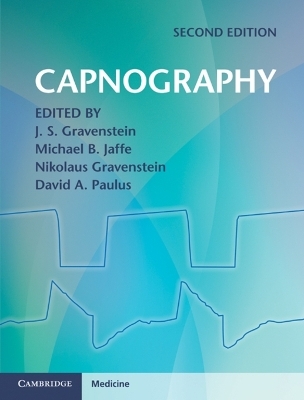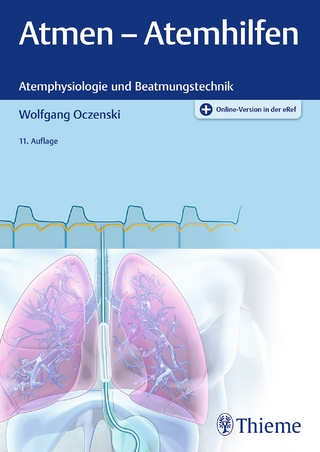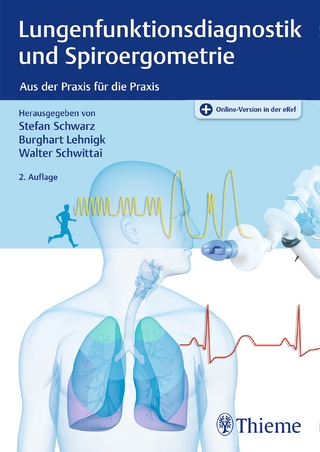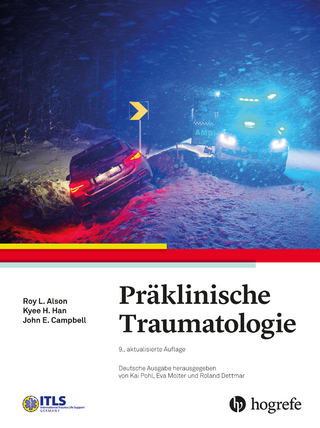
Capnography
Cambridge University Press (Verlag)
978-0-521-51478-1 (ISBN)
In recent years capnography has gained a foothold in the medical field and is fast becoming a standard of care in anaesthesiology and critical care medicine. In addition, newer applications have emerged which have expanded the utility of capnographs in a number of medical disciplines. This new edition of the definitive text on capnography reviews every aspect of this valuable diagnostic technique. An introductory section summarises the basic physiology of carbon dioxide generation and transport in the body. A technical section describes how the instruments work, and a comprehensive clinical section reviews the use of capnography to diagnose a wide range of clinical disorders. Edited by the world experts in the technique, and with over 40 specialist contributors, Capnography, second edition, is the most comprehensive review available on the application of capnography in health care.
The late J. S. Gravenstein was the founder and a long-time faculty member of the Department of Anesthesiology, University of Florida College of Medicine, Gainesville, FL, USA. Michael B. Jaffe is a biomedical engineer working in advanced technology for Philips-Respironics, Wallingford, CT and currently serves on international standards committees relating to respiratory gas monitoring. Nikolaus Gravenstein is Professor in the Department of Anesthesiology and Department of Neurosurgery, University of Florida College of Medicine, Gainesville, FL, USA. David A. Paulus is Professor in the Department of Anesthesiology, University of Florida College of Medicine, Gainesville, FL, USA.
Preface; 1. Clinical perspectives J. S. Gravenstein; Part I. Ventilation: 2. Capnography and respiratory assessment outside of the operating room Robert R. Kirby; 3. Airway management in the out-of-hospital setting Christian C. Zuver, George A. Ralls, Salvatore Silvestri and Jay L. Falk; 4. Capnography: airway management in the hospital setting Ajeet G. Vinayak and Jonathan D. Truwit; 5. Airway management on the operating room David G. Bjoraker; 6. Capnography during anesthesia Yong G. Peng, David A. Paulus and J. S. Gravenstein; 7. Monitoring during mechanical ventilation John Thompson and Nancy Craig; 8. Capnography during transport of patients (inter/intra-hospital) Michael Frakes; 9. Capnography as a guide to ventilation in the field Daniel Davis; 10. Neonatal monitoring Gerd Schmalisch; 11. Capnography in sleep medicine Patrick Troy and Geoff Gilmartin; 12. Conscious sedation Edwin A. Bowe and E. F. Klein, Jr; 13. Capnometry monitoring in high and low pressure environments Carl W. Peters, Gregory H. Adkisson, Mehmet S. Ozcan and Thomas J. Gallagher; 14. Biofeedback Alicia E. Meuret; 15. Capnography in noninvasive positive pressure ventilation (NPPV) Joseph A. Orr, Michael B. Jaffe and Adam Seiver; 16. End-tidal carbon dioxide monitoring in postoperative ventilator weaning Joseph Varon and Paul E. Marik; 17. Optimizing the use of mechanical ventilation and minimizing its requirement with capnography Ira M. Cheifetz and Donna Hamel; 18. Volumetric capnography for monitoring lung recruitment and PEEP titration Gerardo Tusman, Stephan H. Böhm and Fernando Suarez-Sipmann; 19. Capnography and adjuncts of mechanical ventilation Umberto Lucangelo, Francesca Bernabe and Lluis Blanch; Part II. Circulation, Metabolism and Organ Effects: 20. Cardiopulmonary resuscitation David C. Cone, Justin C. Cahill and Marvin A. Wayne; 21. Capnography and pulmonary embolism John T. Anderson; 22. Noninvasive cardiac output via pulmonary blood flow Ron Dueck; 23. PaCO2, PETCO2, and gradient John B. Downs; 24. The physiologic basis for capnometric monitoring in shock Kevin R. Ward; 25. Carbon dioxide production, metabolism and anesthesia Dafna Willner and Charles Weissman; 26. Tissue- and organ-specific effects of carbon dioxide Ozan Akça; Part III. Special Environments/Populations: 27. Atmospheric monitoring outside the healthcare environment and within enclosed environments: a historical perspective Gregory H. Adkisson and David A. Paulus; 28. Capnography in veterinary medicine Richard M. Bednarski and William Muir; Part IV. Physiologic Perspectives: 29. Carbon dioxide pathophysiology Timothy E. Morey; 30. Acid base balance and diagnosis of disorders Philip G. Boysen and Amy Isenberg; 31. Ventilation/perfusion abnormalities and capnography Nawar Al Rawas, Andrea Gabrielli and A. Joseph Layon; 32. Capnographic measures Umberto Lucangelo, Antonino Gullo, Francesca Bernabe and Lluis Blanch; 33. Improving the analysis of volumetric capnograms Gerardo Tusman, Adriana Gabriella Scandurra, Emilio Maldonado and Lucia Isabel Passoni; 34. Capnography and the SPM applied to cardiac output recovery and airway structure and function Peter W. Scherer, John W. Huang and Kai Zhao; 35. Carbon dioxide and the control of breathing: a quantitative approach Michael C. K. Khoo; Part V. Technical Perspectives: 36. Technical specifications and standards Daniel E. Supkis; 37. Carbon dioxide measurement Michael B. Jaffe; 38. Gas flow measurement Michael B. Jaffe; 39. Combining flow and carbon dioxide Joseph Orr and Michael B. Jaffe; Part VI. Historical Perspectives: 40. Brief history of time and volumetric capnography Michael B. Jaffe; 41. The first years of clinical capnography Bob Smalhout; 42. The early days of volumetric capnography Roger Fletcher; Appendix. Patterns of time-based capnograms; Index.
| Erscheint lt. Verlag | 17.3.2011 |
|---|---|
| Zusatzinfo | 16 Halftones, unspecified; 244 Line drawings, unspecified |
| Verlagsort | Cambridge |
| Sprache | englisch |
| Maße | 193 x 253 mm |
| Gewicht | 1200 g |
| Themenwelt | Medizin / Pharmazie ► Medizinische Fachgebiete ► Anästhesie |
| Medizinische Fachgebiete ► Innere Medizin ► Pneumologie | |
| Medizin / Pharmazie ► Medizinische Fachgebiete ► Notfallmedizin | |
| ISBN-10 | 0-521-51478-9 / 0521514789 |
| ISBN-13 | 978-0-521-51478-1 / 9780521514781 |
| Zustand | Neuware |
| Informationen gemäß Produktsicherheitsverordnung (GPSR) | |
| Haben Sie eine Frage zum Produkt? |
aus dem Bereich


